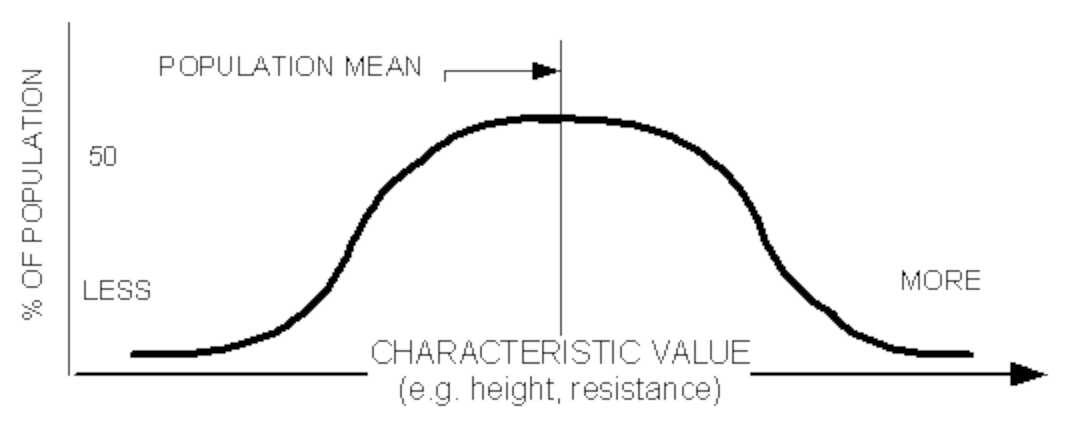Chapter 5
A History and Description of Evolution
Humanism vs. Christianity
The Polarization of America
by Patrick Vosse

Living Water at Christianity Oasis
John 7:38 He that believeth on me, as the scripture hath said,
out of his belly shall flow rivers of living water.

Part One
Evolution vs. Creationism
Chapter 5 - A History and Description of Evolution
It all started with Charles Darwin. Darwin was born 12 February 1809 into a wealthy family. Many in his family were Unitarians and Freethinkers.[1] This foundation would influence his lifetime work. The interesting connection between Unitarianism and Humanism is discussed in Chapter 13. Charles Darwin's grandfather Erasmus Darwin (1731-1802) was a distinguished naturalist with his own intriguing ideas about evolution. While he never thought of natural selection, he did argue that all life could a have a single common ancestor. However, he struggled with the concepts of a mechanism for this descent. He also discussed the effects of competition and sexual selection on possible changes in species.
As a backdrop to Darwin's life, we should discuss the philosophical culture that had developed in Europe. The Renaissance opened the door to freedom of thought and expression of ideas. The repression of a Political Church and royalty was broken and a new liberalism was growing in popularity. Empiricists such as Locke and Voltaire challenged religious belief and claimed that the only existence we can know is that which can be experience or acquired through logic. Atheism could be professed without fear and, during Darwin's lifetime, philosophers such as Schopenhauer, Nietzsche, and Marx became increasingly popular, particularly in the universities.
Darwin attended the prestigious University of Edinburgh as a medical student but he disliked the lectures and found them boring. He shifted his focus to natural history and neglected his medical studies. He pursued independent biological field studies and learned how to classify organisms (see Appendix 1). His frustrated father then sent him to Christ's College, Cambridge in 1828 to pursue a Bachelor of Arts degree in preparation for the Anglican clergy. This was a better fit and in 1831, Darwin graduated 10th out of a class of 178.
While at Christ's College, Darwin met several naturalists sparking his interest in biology and natural history. The most influential of these natural scientists were theistic and saw God's influence in all of nature. Of these naturalists, botany professor John Stevens Henslow became a close friend and mentor to Darwin. It is interesting to note that a work of great influence on Darwin's thinking was William Paley's Natural Theology, which made an argument for divine design in nature, not unlike the modern Intelligent Design proponents discussed earlier.
The Voyage of the Beagle
After graduation, Darwin returned home and within two weeks received a letter from Professor Henslow proposing that Darwin join the Captain of the Beagle, Robert FitzRoy, in a self-funded position on the two-year expedition to gain experience. The ship would sail in four weeks. Darwin's father agreed to fund the adventure.
The voyage lasted nearly five years. Darwin spent most of that time on land investigating geology and making natural history collections while the Beagle's crew surveyed and charted the coasts of South America. He kept complete notes of his observations and theoretical speculations, and periodically sent specimens to Cambridge with letters including a copy of his journal. Darwin had some expertise in geology, beetle collecting and dissecting marine invertebrates, but in all other areas was a novice and merely collected specimens for expert appraisal by others.
Geology and the Fossils
On their first stop at St Jago, Darwin found that a white band high in the volcanic rock cliffs that included seashells. FitzRoy had given him the first volume of Charles Lyell's Principles of Geology, which set out uniformitarian [2] concepts of land slowly rising or falling over immense periods in a consistent manner over time. At Punta Alta in Patagonia, he found fossils of large extinct mammals in cliffs next to modern seashells, indicating recent extinction with no signs of change in climate or catastrophe.
He identified the extinct Megatherium, with bony armor that appeared to him like a giant version of the armor on local armadillos. To the south, he saw stepped plains of shingle and seashells in raised beaches showing a series of elevations. He read Lyell's second volume and accepted its view of "centers of creation" of species, but his discoveries and theorizing challenged Lyell's ideas of smooth continuity and of extinction of species. Darwin was beginning to form his hypothesis.
Geographic Diversity
On the Galapagos Islands Darwin looked for evidence attaching wildlife to an older "centre of creation", and found mockingbirds allied to those in Chile but differing from island to island. He observed variations in the shape of tortoise shells by which one could tell which island they came from. When organizing his notes as the ship sailed home, Darwin wrote that if his growing suspicions about the mockingbirds, the tortoises and other observations were correct, "such facts would undermine the stability of species". He later wrote that such facts "seemed to me to throw some light on the origin of species". At this point Darwin had not yet formed a complete hypothesis, his thoughts were mere speculation based on a few observations.
Organizing the Observations
The Beagle returned on 2 October 1836. Darwin was already a celebrity in scientific circles because, in December 1835, his mentor Henslow had given selected naturalists a pamphlet summarizing Darwin's geological letters. Darwin contacted naturalists who were available to catalogue the collection of botanical specimens. Darwin's father organized the financing that enabled Darwin to be a self-funded gentleman scientist. As such, he did not need the credentials of the more legitimate scientists. Darwin then sought experts to describe the zoological collections. Here the possibility of scientific bias emerges. Darwin speculates on a possible explanation for his observations, then hires reputable scientist to "confirm" his "hypothesis". It has been done before and, as we will discuss later in the book, is still being done to the determent of good science. This type of data manipulation is the reason the peer review step of the scientific method is so important.
Formulating the Hypothesis
In December Darwin, wrote his first paper, showing that the South American landmass was slowly rising, and with Lyell's backing, read it to the Geological Society of London on 4 January 1837. On the same day, he presented his mammal and bird specimens to the Zoological Society for analysis. The ornithologist John Gould announced that the Galapagos birds that Darwin had thought a mixture of blackbirds, "gros-beaks" and finches, were, in fact, twelve separate species of finches. (Appendix 1 gives a brief discussion on the scientific classification of organisms.) Most historical accounts of Darwin's fieldwork accept Gould's observation at face value and it became the cornerstone of Darwin's hypothesis. However, the birds required additional consideration. The difference in the finches was the shape of the beak, an adaptation that occurred to facilitate feeding on different seeds in each bird's local environment. Is the shape of a beak sufficient to classify the organism as a separate species? As discussed in Appendix 1, the classification of organisms is a man-made organization, logical but at the same time arbitrary. If Gould classified the finches as adaptations of a species, i.e. races, that would not have advanced his friend's hypothesis of evolution. By classifying the finches as separate species, Darwin could claim evidence of natural selection that results in evolution. Compared to the different breeds of dogs, cats, horses, and the variations among humans, all of which are within their respective species, slight variations in the shape of a beak does not appear to be consistent with species differentiation used in other organisms. Compare slight (and the variations were slight) variation in beak shape to the difference between a lanky 6-foot 6-inch tall Swede with blond hair, pale skin, blue eyes and a rotund 5-foot 2-inch black-haired, black-eyed, brown-skinned Eskimo. Gould's convenient classification of the finches was a scientific bias that would become commonplace among the Evolutionists.
All this information that flooded Darwin demanded some sort of explanation. The geological evidence that the South American land mass was rising and that marine fossils could be found at high elevations seemed to link biology and geology. The fossils of extinct organisms buried in ancient geological strata hinted to a process of extinction. Finches and other organisms on different islands of the Galapagos appeared to be different species, having adapted to specific environmental conditions. At the same time Darwin was considering these observations, many of his companions were developing concepts of natural development based on "Laws of Nature" and not "ad hoc" miracles of creation. Darwin's background with a strong freethinking influence made him a ready advocate.
In December of 1837, he began his notebook on Transmutation of Species and in it developed perhaps the first evolutionary tree. He proposed that the birds from the various Galapagos Islands were separate species and not merely adaptations (for a discussion on species see Appendix 1). By March of 1838, Darwin was recording his speculation that one species can change into another species and that new species arise to replace extinct species. Darwin was strongly influenced by Malthus' An Essay on the Principle of Population.
Malthus proposed that unless the human population is kept in check, its increases in a geometrical progression and would eventually exceed the required minimum food supply. This is known as a Malthusian catastrophe. As species always breed beyond available resources, favorable variations would make organisms better at surviving and passing the variations on to their offspring, while unfavorable variations would be lost. This would result in the formation of new species. As Darwin describes it:
In October 1838, that is, fifteen months after I had begun my systematic enquiry, I happened to read for amusement Malthus on Population, and being well prepared to appreciate the struggle for existence which everywhere goes on from long-continued observation of the habits of animals and plants, it at once struck me that under these circumstances favourable variations would tend to be preserved, and unfavourable ones to be destroyed. The result of this would be the formation of new species. Here, then, I had at last got a theory by which to work.
Darwin had been courting his cousin, Emma Wedgwood, but she expressed concern that since she was a Unitarian and he an Atheist, they would be separated in the afterlife. Nevertheless, love overcame these doubts and they were married in January of 1839 in a liberal Anglican church. The ceremony was modified to accommodate Emma's Unitarian beliefs.
By early 1839, the newly wed Darwin had the essential outline for his natural selection and transmutation of species. By mid-year, he had developed his ideas into a significant essay, essentially a first draft of the work that was eventually to be published. But by 1856, several works had been published that put forth arguments similar to Darwin's concepts and he was encouraged to publish a comprehensive work that detailed his hypothesis as soon as possible in order to establish his precedence as the originator of the concepts he had been developing.
The truth is that Darwin was not alone in this field and if he had not established his work on evolution, someone else would have done so. However, to write a book with so much detail and novel ideas would take time. So, in July, Darwin published On the Tendency of Species to form Varieties; and on the Perpetuation of Varieties and Species by Natural Means of Selection in an effort to establish his claim on the evolutionary principles. Although the essay was published in several journals, it was mostly ignored or not well received.
Actually, Darwin was not ready to publish. However, because the competition was breathing down his neck, he had to proceed even though he did not have a mechanism to explain how evolution occurred. Darwin's major work, On the Origin of Species by Means of Natural Selection, or The Preservation of Favored Races in the Struggle for Life, went on sale 22 November 1859. The demand was remarkable and the book sold out immediately. The premise of the book was summarized in a paragraph in the introduction:
As many more individuals of each species are born than can possibly survive; and as, consequently, there is a frequently recurring struggle for existence, it follows that any being, if it vary however slightly in any manner profitable to itself, under the complex and sometimes varying conditions of life, will have a better chance of surviving, and thus be naturally selected. From the strong principle of inheritance, any selected variety will tend to propagate its new and modified form.
And he concluded the book with the following remark:
There is grandeur in this view of life, with its several powers, having been originally breathed into a few forms or into one; and that, whilst this planet has gone cycling on according to the fixed law of gravity, from so simple a beginning endless forms most beautiful and most wonderful have been, and are being, evolved.
However, the book was not well received by several of Darwin's peer scientists, i.e. scientists not on his payroll. Darwin avoided specifically stating that the principles of natural selection applied to man. But the implication was clear and the popular press made fun of his "men from monkey" evolution.
The Church of England was divided in its opinion. The conservatives simply dismissed the ideas as false. However, liberals (Political and Philosophical churches) allowed that evolution could be how God created the various organisms. Although Darwin did not expressly state that man was a product of the natural selection process (even though he definitely held that opinion), his contemporaries were not so reticent. Lyell and Huxley were particularly successful in publishing books that specifically included man in the evolutionary process of natural selection.
Mixed Reactions
During the decade that followed publication of the book, the controversy grew. However, the debate centered on the various opinions, usually strongly biased, each side held.
Reality Check
We should pause at this point to review the status of the evolution hypothesis as regards the scientific method.
The First Step, observations, was accomplished during Darwin's voyage on the Beagle. These observations were coupled with observations by others in the areas of geology. Together they formulate a body of data regarding the diversity of species each adapted to its environment. The observations also included the geological modifications to the earth over time and the accompanying fossil record that appeared to show simple life forms in the older geological strata and more complex organisms in the newer strata. The fossil record also shows that many species have become extinct and may have been replaced by new species.
The Second Step, formulate a question, was accomplished during the years following the Beagle voyage. The question was: how could one explain the uniquely adapted species within the current environments as well as the extinction and emergence of organisms over time? The question he formulated had to fit the requirements of the scientific method and the liberal thinkers of the time. The answer to the question could not include the influence of a God, therefore, the question, properly phrased was, how can one explain the uniquely adapted species within the current environments as well as the extinction and emergence of organisms over time by natural means?
The Third Step, formulate a hypothesis, was accomplished by the publication of his book, On the Origin of Species by Means of Natural Selection, or The Preservation of Favored Races in the Struggle for Life. We should at this point summarize Darwin's hypothesis:
- Characteristics are passed from parents to offspring (but he did not know how).
- Organisms tend to over-reproduce. This causes an environmental stress and competition for limited resources. In addition, environments can change in ways that cause changes in resources resulting in stress.
- Those organisms that have characteristics favorable to the competition will more likely succeed and reproduce and, therefore, pass on their characteristics. Those organisms that have characteristics less favorable to the competition will be less likely to survive and will not pass on their less favorable characteristics.
- Over time, the competition changes the characteristics of the organisms such that only those who have the favorable characteristics remain and the less favorable characteristics are eliminated.
- Given sufficient time and environmental stress of the correct type, the group of organisms will eventually evolve into a different species.
The above are a synthesis of various hypotheses Darwin combined into his own concept of evolution. The concepts Darwin borrowed from his peers are:
- Evolution: The world is not constant or recently created nor perpetually cycling. Rather, is steadily changing, and organisms are transformed over time.
- Common descent: Every group of organisms descended from a common ancestor. All groups of organisms, including animals, plants, and microorganisms, ultimately go back to a single origin of life on earth.
- Multiplication of species: Species multiply, either by splitting into daughter species or by "budding". Budding is the establishment of geographically isolated founder populations that evolve into new species.
- Gradualism: Evolutionary change takes place through the gradual change of populations and not by the sudden (saltational) production of new individuals that represent a new type.
- Natural selection: Evolutionary change comes about through the abundant production of genetic variation in every generation. The relatively few individuals who survive, owing to a particularly well adapted combination of inheritable characteristics, give rise to the next generation.
However, neither Darwin nor his contemporaries progressed beyond the third step of the scientific method process. They did not design experiments that would prove outcomes predicted by the hypothesis. Nor did they publish the data for others to review and reproduce. And without this, the hypothesis could not advance. At this point, the evolution hypothesis was an unproven concept, speculation, with nothing to support it. Even Darwin's closest companions Gray, Hooker, Huxley and Lyell had reservations; and, as scientists, they should. But eventually they supported him and went on to add their own contributions to the evolution position.
However, not all of Darwin's peers accepted this hypothesis. Adam Sedgwick, Darwin's geology professor and the person responsible for introducing Darwin to the concept of epic geological periods, faulted him on not being inductive in his thinking (in other words Darwin did not adhere to the scientific method).
Louis Aggassiz, professor of geology at Harvard, did not think that the geological evidence supported the time period necessary for the gradual speciation to occur. He is quoted as saying about Darwin's hypothesis: It is a scientific mistake, untrue in its facts, unscientific in its method, and mischievous in its tendency.
Henry Charles Fleming Jenkins, professor of engineering at the prestigious Glasgow University felt it was too speculative an idea without enough data to support it. Of Darwin's hypothesis, he said:
The chief arguments used to establish the theory rests on conjecture. We are asked to believe all these "maybes" happening on an enormous scale, in order that we may believe the final Darwinian "maybe" as to the origin of species. The general form of his argument is as follows: all these things may have been, therefore my theory is possible, and since my theory is a possible one, all those hypotheses which it requires are rendered probable. There is little direct evidence that any of these maybes actually have been. Many of these assumed possibilities are actually impossibilities.
The famous Lord Kelvin (William Thomson): felt that Darwin's estimates of the age of the Earth were far too long (Darwin himself had estimated that the geology of southern England was 306,662,400 years old.). His measurements of radiation done at the end of the century led him to believe that the Earth was too young for life to develop.
Richard Owen, anatomist/paleontologist: strongly disagreed with Darwin and over his career he continuously debated Darwin and Huxley.
Even Darwin had problems with his "theory". He admitted that it was difficult to use natural selection as and explanation for complicated structures such as the human eye. In the Origin of Species, he states:
With all its inimitable contrivances for adjusting the focus to different distances, for admitting different amounts of light, and for the correction of spherical and chromatic aberration might at first appear absurd in the highest possible degree, but nevertheless, if numerous gradations from a perfect and complex eye to one very imperfect and simple, each grade being useful to its possessor, can be shown to exist, then it is quite possible the theory can account for such development.
However, he never offered such proof and so, with the waive of an arrogant hand, simply dismissed the objection. Much of Darwin's hypothesis was based on the work of paleontologists and the fossil record they were rapidly developing. But the fossil record itself raises serious objections to the hypothesis. As Darwin writes of his concern in The Origin of Species:
The number of intermediate varieties, which have formerly existed must be truly enormous. Why then is not every geological formation and every stratum full of such intermediate links? Geology assuredly does not reveal any such finely graduated organic chain; and this, perhaps is the most obvious and serious objection which can be urged against the theory.
But this was more than "a serious objection". The observations not only did not support the evolution hypothesis they contradicted it. Normally this in itself would be sufficient to generate numerous articles in scientific journals debunking the hypothesis. Normally, but not in this case.
Spin Doctors
How could Darwin's hypothesis gain such widespread acceptance within the scientific community with such prominent opponents? Much of Darwin's success was due as much to aggressive public relations on the part of Darwin and his friends as it was to any scientific evidence they presented. Darwin put almost as much effort into promoting his hypothesis as he did in developing it. For example, Darwin shrewdly distributed first edition copies of The Origin of Species to those he regarded as the most influential. This may appear an insignificant move on his part but, in 19th century Briton, to receive a book by its author with a letter complementing the recipient assured either a favorable comment or at least reduced criticism. Darwin may have been a dilettante scientist without serious credentials, but he was a shrewd self-promoter who launched a successful propaganda campaign on behalf of his hypothesis.
Darwin and his followers fully understood the importance of media, and they did all they could to enlist the press on their behalf. Darwin's followers purchased a science journal, Natural History Review, and refashioned it as a mouthpiece for their scientific ideas. They also developed relationships with a group of British publishers in order to produce a steady stream of books promoting evolutionary theory among the general public as well as the scientific elite. Darwin organized, and indexed articles about his hypothesis, and would circulate positive reviews, even if he had to pay for their publication out of his own pocket.
Within a few years, Darwin's supporters had developed into a powerful group within the scientific community. That group would control the scientific media of the day, at least in regards to evolution. His opponents were individual scientists without an agenda and were no match for Darwin's well organized media campaign. The rigor of the scientific method had been abandoned in favor of a form of pseudoscience based on media blitz and propaganda. Objections to Darwin based on scientific procedure were drowned out by popular opinion.
However, much of Darwin's success in successfully promoting evolution was not due to scientific acceptance. Humanists found in evolution the "Holy Grail" of their philosophy. The Humanists of the late 19th century were less concerned with the truth of Darwin's hypothesis and more concerned with its implications. Many of the scientists that supported evolution were also Humanists and could see the advantage of supporting evolution even though it was not yet ready for prime time. With a sufficient number of Humanist scientists, politicians, and influential elite promoting evolution, it was easy to establish a "consensus opinion" against which legitimate scientific challenges would be shouted down. As we discuss in Part 3, Humanists use these same tactics today, not just for promoting evolution, but for most of the Humanist issues on their agenda.
Of Monkeys and Men
When Darwin published the Origin of Species in 1859, he was well aware of the controversy it would cause and he merely suggested that man should be included in the evolutionary process. But as the propaganda spread by the media gained momentum and evolution became imbedded in the scientific community, he became bolder and more confident that he had sufficient support to challenge the religious opponents as well as those scientists that continued to object to his lack of scientific rigor. In 1871, he published The Descent of Man and Selection in Relation to Sex.
After the publication of The Origin of Species, even some supporters of Darwin could not accept that humans were included in the evolutionary process. Those objecting, and these included Wallace the co-founder of evolution, observed that the gap in mental abilities between man and even the most intelligent ape was too great to be explained by natural selection. The Descent of Man was written largely in response to these objections. However, this objection continues today unanswered and is a serious difficulty for Evolutionists.
In The Descent of Man, Darwin identifies similarities in the basic organs between man and other animals. He also noted similarities in the embryological development that point to the human embryo proceeding through stages of development that mirror the evolutionary process. He suggested that there were mental similarities between man and higher animals. He answered the opponent's objection to the mental gap between man and ape as one of degree not kind. In The Descent of Man, Darwin clearly establishes his position that all life descended from a common ancestor.
In The Descent of Man, Darwin introduced his concept of sexual selection in the evolutionary process. He was perplexed at certain characteristics exhibited by animals that had no apparent advantage in survival. Some, in fact, such as the peacock's tail were a definite disadvantage. This seemed to challenge his hypothesis and required explanation. Darwin proposed that different characteristics could be selected if they conveyed a reproductive advantage to the individual. Males in particular received the benefits of sexual selection, either by acquiring weapons with which to fight over females, or by acquiring beautiful plumage with which to attract the female animals.
Much of The Descent of Man is devoted to providing evidence for sexual selection in nature, which he also ties in to the development of aesthetic instincts in human beings and the differences in coloration between the human races. Thus, through the selection of the fittest members of the community for mating partners, the characteristics of the strongest and most suitable for survival are passed on to the next generation.
But Darwin does not stop at the inheritance of physical traits. He did not distinguish between mind and body in the process of inheritance and proposed that mental characteristics are passed on from one generation to another. Darwin argued that social and moral instincts are evolved and that the development of civilization from primitive to highly civilized is also a product of human evolution. This, according to Darwin had caused an aberration in evolution. As Darwin states in The Descent of Man:
We civilised men, on the other hand, do our utmost to check the process of elimination; we build asylums for the imbecile, the maimed, and the sick; we institute poor-laws; and our medical men exert their utmost skill to save the life of every one to the last moment. There is reason to believe that vaccination has preserved thousands, who from a weak constitution would formerly have succumbed to small-pox. Thus the weak members of civilised societies propagate their kind. No one who has attended to the breeding of domestic animals will doubt that this must be highly injurious to the race of man. It is surprising how soon a want of care, or care wrongly directed, leads to the degeneration of a domestic race; but excepting in the case of man itself, hardly any one is so ignorant as to allow his worst animals to breed.
Darwin felt that these instincts towards helping the "weak members" was part of our social evolution and concluded that "nor could we check our sympathy, even at the urging of hard reason, without deterioration in the noblest part of our nature ...we must therefore bear the undoubtedly bad effects of the weak surviving and propagating their kind." Darwin believed that the "savage races" of man would be replaced by the "civilised races" at some point in the near future: "At some future period, not very distant as measured by centuries, the civilised races of man will almost certainly exterminate, and replace, the savage races throughout the world." This concept would result in some very negative consequences and form one of the principles of Humanist philosophy in the early 20th century.
Eugenics – A Philosophy of Racism
During the period between the publication of his two books, Darwin collaborated extensively with his cousin, Francis Galton. Galton's position was that mental qualities such as intelligence, skill, and temperament were inherited in the same way as physical traits. He argued that society had to take control of the hereditary process and not leave it to natural selection. By doing so, society could avoid over-breeding by "less fit" members of society and the under-breeding of the "more fit" ones. His position was clear, social institutions, such as welfare and insane asylums, were allowing "inferior" humans to survive and reproduce at levels faster than the more "superior" humans. This would result in a degradation of society. It was during this period that Darwin coined the now popular phrase, survival of the fittest. This philosophy is called eugenics, which is defined as: a scientific field involving the controlled breeding of humans in order to achieve desirable traits in future generations. Eugenics may be an inevitable consequence of Darwin's hypothesis that man's mental characteristics are a function of his brain. Man is merely an advanced animal, differing from lower animal only in degree not in kind.
The social control of hereditary included, 1) the identification and classification of individuals and their families into groups such as poor, mentally ill, blind, 'promiscuous women', homosexuals and entire "racial" groups such as the Roma and Jews as "degenerate" or "unfit" then, 2) their segregation or institutionalization, their sterilization, euthanasia, or mass extermination. Darwin and friends provided justification for genocide.
Eugenics appealed to many outside the scientific community (many in the scientific community called it pseudoscience). After all, if you were an educated cultured member of society, then you were one of the "superior humans". Eugenics is an example of mixing philosophy with science. It was also the beginning of the trend to use evolution as a political tool to advance other principles of the Humanist philosophy; more on that in Part 3.
From an economic point of view, eugenics justified exploitation of the "inferior human". One could morally dismiss arguments against colonization, elimination of aboriginal societies, and slavery by standing behind "eugenics". Eugenic grew in popularity, not as a science but as a social philosophy, throughout the first half of the 20th century. Among its proponents were H. G. Wells, Woodrow Wilson, Theodore Roosevelt, Emile Zola, George Bernard Shaw, John Maynard Keynes, William Keith Kellogg, Margaret Sanger, Winston Churchill, and Sidney Webb. Perhaps the most notorious proponent of eugenics, however, was Adolph Hitler who put the idea to a practical and gruesome use. We will revisit the subject of eugenics in Chapter 13.
Charles the Chauvinistic Racist
Darwin taught that women were biologically and intellectually inferior to men. The intelligence gap that Darwinists believed existed between males and females was not minor. He considered it to be of a level that caused some evolutionists to classify the sexes as two distinct psychological species, males as homo frontalis and females as homo parietalis, referring to the parts of the brain that corresponded to the predominant thinking processes of each sex. Darwin himself concluded that the differences between male and female humans were so enormous that he was amazed that 'such different beings belong to the same species'. He was surprised that 'even greater differences still had not been evolved.'
In Descent, Darwin introduced his discussion of psychology. Darwin thought "savages" had smaller brains and more prehensile limbs than the "higher" races. (So much for good objective observation!) Their lives were dominated more by instinct and less by reason. He placed them in an intermediate position between nature and man. And Darwin extended this placement by analogy to include not only children and congenital idiots but also women, some of whose powers of intuition, of rapid perception, and perhaps of imitation were "characteristic of the lower races, and therefore of a past and lower state of civilization"' (Descent 1871:326–327). Something tells me that Charlie may have had problems with his wife, Emma, other than a religious difference, particularly if she read his work.
Although Darwin and his supporters were successful in using the media to oppose legitimate scientific objections, they had no influence on the conservative clergy. The Church of England had begun to split into the conservative, more evangelical, and the liberal, more philosophical and social components. The conservatives dismissed Darwin outright but the liberals embraced evolution as a tool of God's work, overlooking the fact that it denied a divine influence altogether.
In an increasingly liberal society with many clergy leaning toward the Social-Philosophical Church, those clergy that opposed Darwin's evolution were those who were more fundamental in their faith. Scriptures state that man was made in God's image and is unique in all creation. To say that man is just another animal developed by a natural process without a God, was unacceptable to the traditional Christian faith. The objections from the conservative Christian community continue to this day and form the basis for the Humanism-Christianity conflict.
Back to the Drawing Board
Media hype and clever propaganda can only go so far and the inevitable happened. It was recognized, even by many of Darwin's supporters that his hypothesis did not explain many observations and could not advance. So the evolutionists set out to evolve the evolution hypothesis to better explain evolution (sorry about the pun – I thought it was funny).
The Urban Legend Theory
In 1809, Jean-Baptiste Lamarck proposed in his Philosophie Zoologique the folk wisdom that characteristics which were needed were acquired (or diminished) during the lifetime of an organism then passed on to the offspring. Examples of what is traditionally called Lamarckism (also known as "soft inheritance"), would include giraffes that stretch their necks to reach leaves high in trees, strengthen and gradually lengthen their necks. These giraffes have offspring with slightly longer necks. Another example is a blacksmith strengthens the muscles in his arms through hard work. His sons will have similar muscular development when they mature. He incorporated this mechanism into his thoughts on evolution (that's right, the concept of evolution did not originate with Darwin), seeing it as resulting in the adaptation of life to local environments. This was a commonly held concept, more like an "urban legend" that a scientific proposal. Darwin partially incorporated this idea into his Origin of Species because his hypothesis needed a mechanism for transmitting characteristics from one generation to another.
The rejection of Lamarckism came from August Weissmann's germ plasm theory developed in the 1880's. Weissman realized that the cells that produce the germ plasm, or gametes (i.e. sperm and egg), separate from the somatic cells that make up the other body tissues at an early stage in embryonic development. Since he could see no obvious means of communicating characteristics between the two, he established that the inheritance of acquired characteristics was therefore impossible. This is known as Weismann's barrier.
Mendel's Inheritance Principle
The next modification to Darwin's hypothesis was the concept of Gregor Mendel's (1822-1884) mechanisms of genetic inheritance of characteristics. Mendel's work lay in obscurity until 1900 when it was rediscovered. Darwin did not include a reasonable mechanism for transferring characteristics from one generation to another in a way that could accommodate consistency and at the same time allow for modification. In Darwin's, The Origin of Species, he proposed a mechanism for transferring characteristics called pangenesis. Pangenesis states that all the body's cells participate in passing on characteristics to offspring by shedding "gemmules" prior to fertilization. This concept has never been verified by observation and is now discredited by biologists. It shows the poor foundation upon which Darwin based his hypothesis.
Mendel showed that the contributions of each parent retained their integrity rather than blending with the contribution of the other parent. He conceived the idea of heredity units, which he called "factors" (later these were determined to be genes), one of which is a recessive characteristic and the other dominant. Mendel said that factors normally occur in pairs in ordinary body cells, yet segregate during the formation of sex cells. Each member of the pair becomes part of the separate sex cell.
Mendel conducted numerous experiments and supported his conclusions with rigorous statistical analysis. In other words, good science. It is interesting to note that at approximately the same time, Darwin was conducting similar experiments and made similar observations but completely missed the significance. Darwin was so focused on the concept of quantitative variation as the mechanism for evolution that he was unable to see the laws of inheritance that the experiments clearly demonstrated to Mendel. In other words, Darwin was not objective and ignored data that did not agree with his preconceived ideas. For Darwin, evolution had become a philosophy not a science, not unlike Evolutionist today. Early Mendelians viewed hard inheritance as incompatible with natural selection and favored saltationism[3] instead.
Genetic Diversity
In 1937, Theodosius Dobzhansky published Genetics and the Origin of Species that emphasized that real world populations had far more genetic variability than had previously been assumed. For example, the height of the average human male is about 5 feet 10 inches. However, the height of human males can vary from 3 feet to 7 feet. What we consider the "standard species" is only an example taken from a wide variety.
The Statistical Approach
The geneticist Ronald Fisher (1890-1962), was one of the primary authors of the modern synthesis modification to Darwin's hypothesis. His most famous work The Genetical Theory of Natural Selection, published in 1930, developed ideas concerning sexual selection and population dynamics.
Fisher also developed statistical analyses of genetic factors in populations. Up to now, scientists focused on evolutionary changes at the individual level. Fisher proposed that evolution is a matter of gene frequencies and distribution. He created the modern field of population genetics. He approached evolution as a general population rather than the individual dynamic was a significant departure from Darwin's original concept.
Figure 1, below, shows the typical "bell curve" that describes how random events are distributed. This is called Gaussian distribution. If we measure a certain characteristic of a species, such as height, the measurements of several individuals will be distributed as shown in the figure. Fisher suggested that it is the individuals at the extreme ends of the curve that drive the evolutionary process.
Figure 1. Gaussian distribution or "bell" curve.
For example, assume the curve represents plant resistance to draught, with low resistance on the left and high resistance on the right. If a prolonged draught occurs, only a small remnant of the draught-resistance plants (on the right) will survive. They will reproduce offspring that are more draught-resistant than the previous general population.
Another example is bacterial resistance to antibiotics. A population of bacteria will have a resistance distribution as shown in Figure 1. On the left of the curve, there are a few bacteria that are very susceptible to the antibiotic and will die after only a few doses. Others in the population require more doses of the antibiotic before they die. There are a few members of the population that are highly resistant to the antibiotic. Several more doses are required to kill them. These are on the right of the curve. If the antibiotic administration is stopped before the highly resistant bacterial are killed, there will be a remnant that survive to reproduce offspring resistant to that particular antibiotic.
Note that in these examples the species adapts to stress conditions and is only modified. The new population remains the same species. Much of Fisher's work was used in establishing eugenic policies. If one eliminated the weak and undesirable members of the population, the resulting population would be improved.
Reality Check
We should again pause to check on the status of the evolution hypothesis 70 years after Darwin published The Origin of Species. The following are the significant points:
- Many established scientists considered Darwin's original proposal regarding the inheritance mechanism as flawed or incomplete at best or even pseudoscience.
- Darwin and Mendel both conducted experiments that determined the principles of the hereditary mechanism but whereas Mendel was objective in his observations and proceeded according to the scientific method to become the father of the science of genetics. Darwin, the scientific dilettante, ignored what the observations indicated because it would challenge his concept (later proved to be erroneous) for the mechanism of natural selection.
- Even with significant modifications to Darwin's original hypothesis, scientists could not proceed with experiments to prove it. Nor was there any progress in showing that evolution is falsifiable as required by the scientific method.
- The only progress in the evolution hypothesis was to recognize some of the flaws in the original premise. But there was still no explanation about the mechanism by which hereditary characteristics changed and were passed on to subsequent generation.
Bringing It All Together
By the mid-1930's, there had been considerable advances in the field of biology. Some of these discoveries had possible application to the evolution hypothesis, which had not yet been completely developed. Fisher's general population approach was accepted as a solution to some of the problems raised by Darwin's original hypothesis. But the evolution hypothesis still lacked unity and consistency. Much of the work of geneticists during the first part of the century did not support natural selection. This, and the fact that the gaps observed by paleontologists in the fossil record, as Darwin himself noted, did not support gradual changes as required by the evolution hypothesis raised serious objections to the hypothesis.
Modern evolutionary synthesis developed during the 1930's and 40's. This was an attempt to reconcile the inconsistencies between the discoveries of scientists and evolution by natural selection. It remains as the predominant hypothesis today. By the 1960's, great advances had been made in genetics and molecular biology as well as in population statistics. The discoveries in genetics promised the long searched for mechanism of evolution from one species to another. Modern evolutionary synthesis combines the hard science of geneticists, population statisticians, and paleontologists with evolutionary science. Modern evolutionary synthesis holds the following tenants (for a discussion of genetics and terms used here see Appendix 2):
- All evolutionary phenomena can be explained by known genetic mechanisms and the evidence observed by naturalists.
- Evolution is gradual. Small genetic changes are ordered by natural selection. Apparent gaps in the development of species (or other taxa) are explained as originating gradually through geographical separation and extinction (not saltation).
- Natural selection is overwhelmingly the main mechanism of change. Even slight advantages are important if continued.
- Genetic diversity carried in natural populations is a key factor in evolution. The effect of ecological factors such as niche occupation and the significance of barriers to gene flow are all important.
- In paleontology, the ability to explain historical observations by extrapolation from micro (adaptation such as skin color in human races) to macroevolution (development of new species) is proposed. Gradualism does not mean constant rate of change.
The difficulty is that Evolutionists attempted to include various elements that were supported by hard science and then claim that they proved the evolutionary process, but they did not. Their logic was illogical. Their thinking is analogous to the following example.
- Master artists use special paints to make a masterpiece.
- Master artists use interesting models when painting a masterpiece.
- Master artists use special brushes when painting a masterpiece.
If I use the paints of Van Gough, the model used by Da Vinci in the Mona Lisa, and the brushes of Rembrandt, I still will not have a masterpiece. Unless I have the capacity and talent within myself to make a masterpiece, I will not be able to make one. Borrowing the components that have gone into other masterpieces cannot, by themselves, make my work a masterpiece.
In the same way, Evolutionists have borrowed the established elements from other scientific disciplines that were developed through rigorous application of the scientific method. They have attempted to integrate them into the evolution hypothesis asserting that their rigor makes evolutionary science rigorous. However, the borrowed jargon and misappropriation of other's work has not resulted in a "masterpiece". Unless the evolution hypothesis has the inherent capacity for truth, it will never be a "masterpiece".
There are still no experiments that establish change from one species to another. And there is still no proposal for establishing evolution as falsifiable. Modern evolutionary synthesis is merely a modification of the original incomplete hypothesis proposed by Darwin.
During the later half of the 20th century, modifications to the evolution hypothesis were proposed. But not all Evolutionists agree on exactly what the evolution mechanism is and no evolution from on species to another by natural selection has been demonstrated by any proposed mechanism.
Them Bones, Them Bones, Them Dry Bones
Perhaps the most compelling argument for evolution is given by the work of paleontologists, scientists who study geological structures and the fossil record associated with the various layers. As one digs deeper into the earth, the strata are older, having been buried by dust, alluvial, volcanic, or other deposits or moved by the earth's constant dynamics, such as earthquakes. As the paleontologists dig into the earth, they discover fossils and they can approximate the age of the fossil by associating it with the age of the geological strata.
These scientists made an interesting observation. The fossils in the lower, older, geological strata were simple, less developed and the fossils in the higher, younger strata were more complex and better developed. The implication was clear; organisms began millions of years ago with simple biological structures and became more complex over time. The fossil evidence also demonstrated that over time many organisms became extinct. The fossil record appeared to support the evolution hypothesis that species evolved into new species better equipped to survive environmental pressures and the less fit species became extinct. Paleontology provides the best physical evidence for evolution. But there is a problem.
The evolution hypothesis is based on a gradual change in the genetic makeup of a species as it evolves from the original to the new form; slow, smooth changes that involve millions of intermediate steps with the corresponding intermediate organisms. However, the fossil record does not support this hypothesis. The intermediate organisms between species are missing. We mentioned Darwin's concern about this problem earlier when he wrote in The Origin of Species:
The number of intermediate varieties, which have formerly existed, must be truly enormous. Why then is not every geological formation and every stratum full of such intermediate links? Geology assuredly does not reveal any such finely graduated organic chain; and this, perhaps is the most obvious and serious objection which can be urged against the theory.
The fact is the fossil record only partially supports Darwin's evolution hypothesis and at the same time contradicts it. It was obvious that a major modification of the evolution hypothesis was necessary. However, the problem was broader than paleontology disagreeing with Darwin's hypothesis. The fossil record did not agree with the Evolutionist's interpretation of genetics. A history of the development of genetics and how Evolutionists have interpreted discoveries in genetics to support evolution is given in Appendix 2. The data developed by geneticists does not include any documentation of one species changing into another species. However, it does offer the Evolutionist the mechanism by which such a change might occur. The various mechanisms of genetic modification support the slow, gradual change proposed by Darwin but they do not explain the gaps in the fossil record. As evolutionary biologist, N. Eldredge states, "Most families, orders, classes, and phyla appear rather suddenly in the fossil record, often without anatomically intermediate forms smoothly interlinking evolutionarily derived descendant taxa with their presumed ancestors."[4]
During the 1970's the concept of punctuated equilibrium was developed as an answer to the problem of the millions of "missing links" in the fossil record. Punctuated equilibrium is a proposal that a species remains stable for most of its geographical history. This is because any genetic changes in individuals within the general population are diluted by the normal genetic characteristics of that population. The fossil record would, in that case, only show the normal characteristics. For example, if the majority of a population had big feet and only 1/10th of a percent had small feet, the fossil record would probably miss the small-foot bones.
However, small, isolated pockets of individuals with genetic variation (e.g. small feet) can exist in the fringe of the general population. When environmental stress challenges the species, the general population is eliminated and the modified group survives. In that case, the fossil record would show the original population to be extinct and the sudden appearance of the new species. This is an interesting hypothesis but not universally accepted mainly because the fringe population would not have such a great difference from the general population as seen in the fossil record. Some explain the gaps in the fossil records by migration. In this proposal, the missing links developed elsewhere and later migrated to the paleontological dig. None of these proposals is supported by actual empirical experimentation and are, for the most part, mere speculation.
It is obvious that, after 150 years of intense efforts to confirm evolution by natural selection as a legitimate scientific principle, there are still significant deficiencies. How significant are these deficiencies?
[1] Unitarians do not believe in the Trinity and do not believe that Jesus is the son of God but merely a prophet and teacher. Freethought holds that all knowledge must be supported by factual evidence and logic and rejects all beliefs that are not supported by reason and scientific principles, e.g. religion.
[2] Uniformitarianism assumes that the natural processes that operated in the past operate today in the exact same manner.
[3] Saltationism is a sudden change from one generation to the next that is large, or very large, in comparison with the usual variation of an organism.
[4] Eldredge, N., 1989, Macro-Evolutionary Dynamics: Species, Niches, and Adaptive Peaks, McGraw-Hill Publishing Company, New York, p. 22.
Copyright © 2011 by Patrick Vosse
All Rights Reserved
Click the link below to return to
Purity Publications Free Christian Ebook Store:
Copyright © 2000-2025 All rights reserved.
Learn how the Christianity Oasis Ministry was created by the Hand of the Lord. A true story of unconditional Love, Mercy and God's glorious Grace.
Excellent Christian Resources
Holy Spirit ... This is one of the most awesome gifts you will ever receive or share. Get to know the Holy Spirit.
When you have finished this A History and Description of Evolution free E-book, you can also check out some of the other Christian entertainment, games, music, books, mall, studies and programs within our Christian community below:

C-O-O-L
❤
Love
Offerings
❤
Love
Offerings

We hope you enjoyed this A History and Description of Evolution E-book. If after sojourning through the Christianity Oasis community, you find our Ministry to be worthy and would like to make a Love Offering as to assure the Light of Hope continues to shine for the lost and hurting souls dwelling in darkness, thereby providing them with the opportunity to pursue the path of Christianity as well as provide a safe and enjoyable sanctuary for fellow Christians.
Please choose to make a one time love offering securely by way of Paypal, credit card or debit card by clicking on the PayPal button below.
If you prefer to pay by check or other source or if you have any questions, please contact us at: ChristianityOasis
May God bless you abundantly for your Love.






